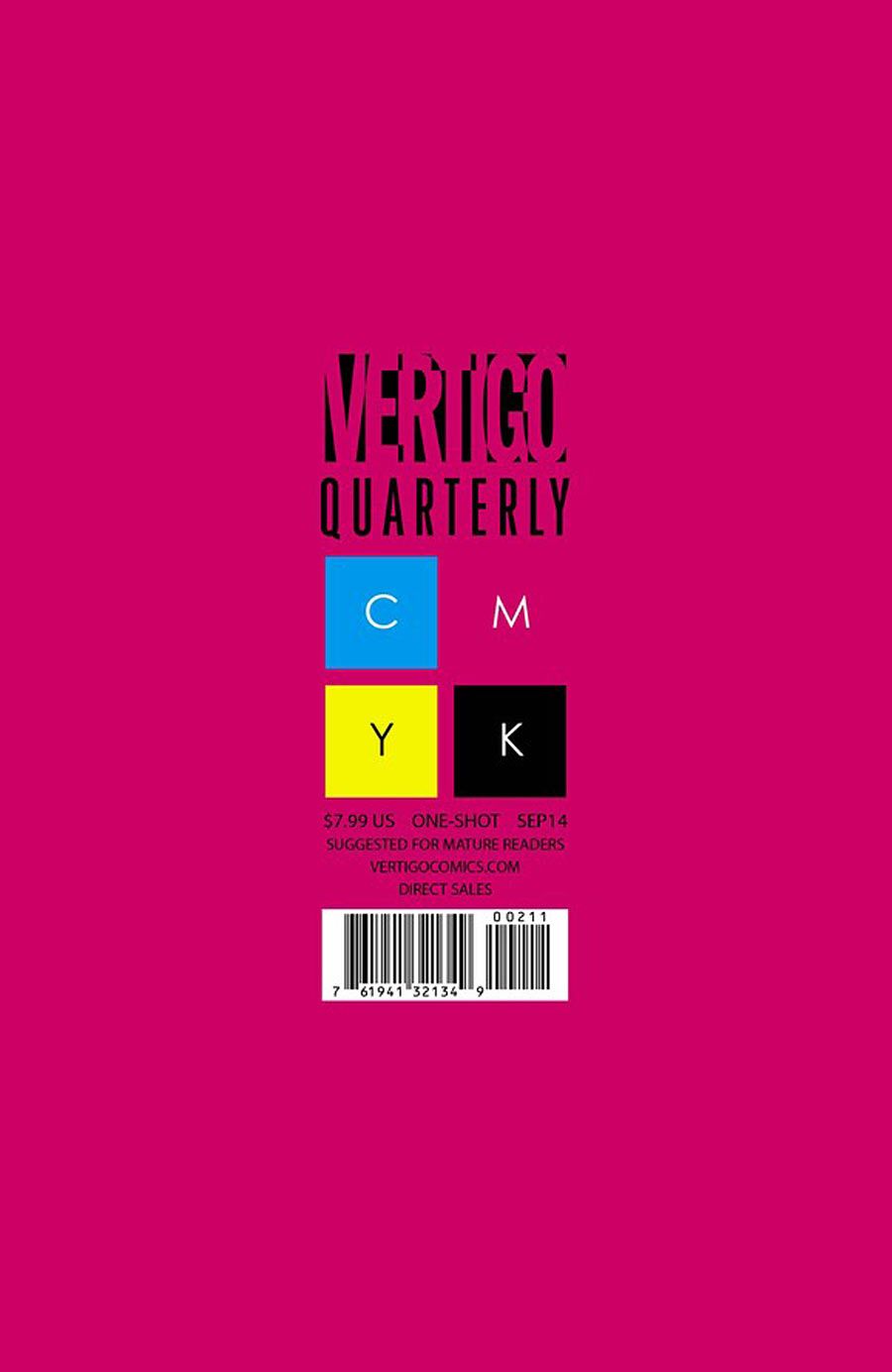"Vertigo Quarterly Magenta" is a solid second installment in Vertigo's "CMYK" anthology series. As with all anthologies, there's a range in quality from story to story, but each one in this issue has a clear, creative point-of-view. "CMYK" continues to offer a compelling demonstration of the unique strengths of the short comic.
There are nine stories in "Magenta," of which my favorites were probably "Bone White, Blood Red", "Adrift" and "Gem Pockets." (That said, what I most enjoy about "CMYK" is how difficult it is to pick a favorite.) Some of the stories reach complete, clear conclusions, while others are unresolved slice-of-life tales, and each approach has different strengths.
"Bone White, Blood Red" is one of the shortest and arguably least "complete" of the nine, presenting a wonderfully creepy and unresolved world. Deering's script is lively and filthy; she uses dialogue to develop the characters, and lets Scalera and Dinisio's art develop their supernatural world. Scalera's settings are spookily off-kilter, angular people in angular settings, and Dinisio's witchy colors look like the bad sort of enchanted forest. The world is so spooky to look at that I didn't need world-building answers.
"Who is Uber?" wrestles serious sci-fi questions with wacky, inventive art. Berrocal fills her modern, light lines with magenta and yellow colors that look like blaring advertisements, and it's a really fun read. (Uber's "new look" is particularly amusing.) The ending leaves room for continuation, so here's hoping there's more coming in "Vertigo Quarterly Yellow."
"Adrift" has probably the most complete arc and closure. Nathan Fox makes phenomenal use of color. Using shots of green and magenta in a mostly black-and-white world, he gives Jody Houser's story of grief a believably teenage feel. Houser herself writes a believable script that only needed one or two tweaks to make it less obvious. Still, who knew that a Barbie doll could provide such a poignant lens for loss?
"Gem Pockets" is adorable and fragile. Annie Mok's dialogue is a realistic mix of the mundane and intellectual -- "I have to use the washroom"; "I just read this bit in that Paul Auster book." -- and these small, personal conversations overlay Dawson Walker's trippy, unmoored art sequences.
"The Shoe in the Attic" is a disturbing, complete tale of revenge. Rufus Dayglo's artwork looks creepily repressed, with cold eyes on cartoony faces, and Peter Milligan's story is neatly, efficiently plotted.
"Magenta is not a Colour" fits the most obviously with the theme of the issue. It's an enjoyable tour of self-exploration, which opines on everything from females in STEM to social media culture. While these opinions made me smile, they sometimes detracted from the sense that this character was more than an authorial stand-in. Still, it's a quick and clever read with gorgeous artwork.
"Captives" explores tense family dynamics, but amplified by the claustrophobia of a snowed-in cabin. Moreci's dialogue builds slowly and convincingly towards violence. Andrea Mutti and Trish Mulvhill add to the sense of the narrator's confusion and mounting paranoia with panel layouts that look like gunshot-fractured glass.
"Gloves" looks like the grittiest story, but its use of redemption, family and coincidence is worthy of any soap opera. It teaches a rather curious lesson about how to solve problems, but the twist at the end is undeniably awesome.
"Pink Slumber" features beautiful artwork that feels vintage, but its arc isn't very discernible. Now, I don't need a short comic to contain a full story, but this one feels like it's aiming for a conclusion that I didn't quite feel hit.
The largest detraction from "Magenta" is perhaps its price point, which might not feel worth all these small stories. Some readers might prefer to wait until the trade, but I'm personally enjoying the heck out of this series.

